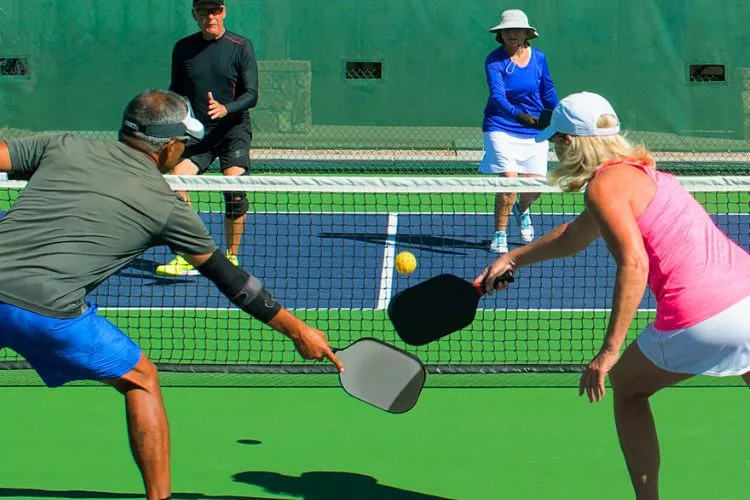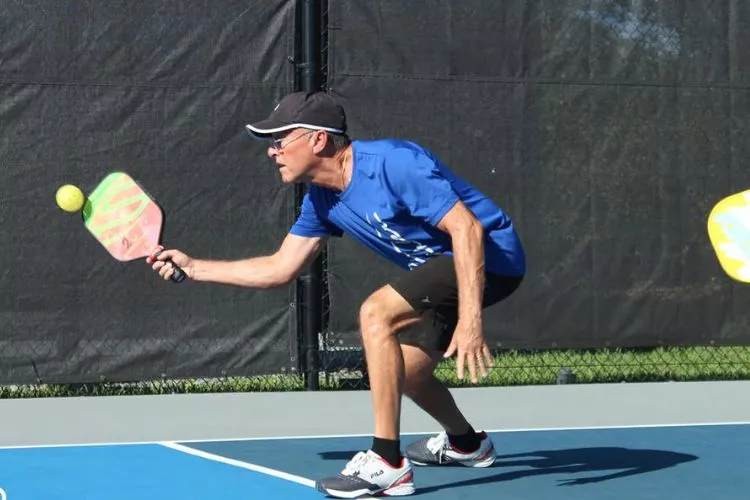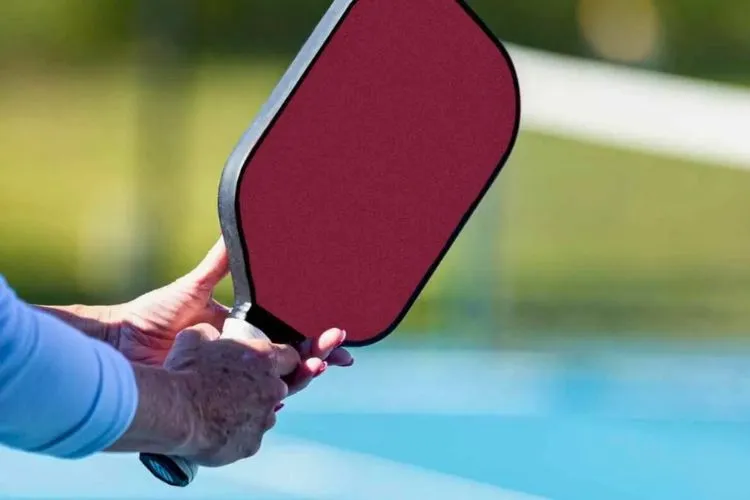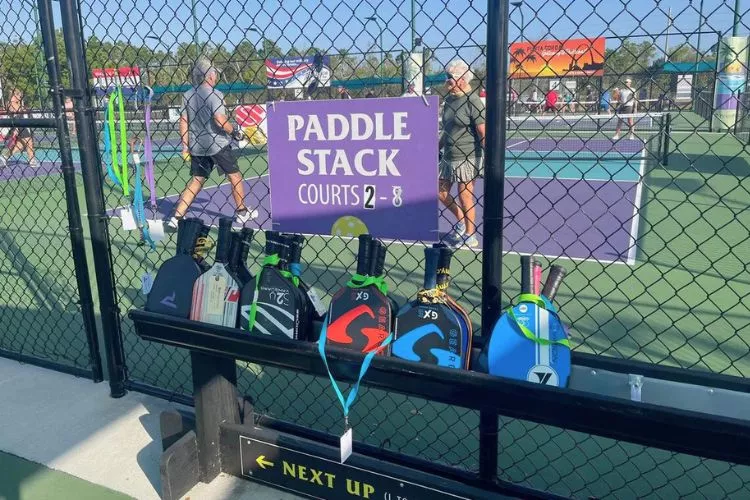Pickleball is a game that transforms the familiar aspects of badminton, tennis, and ping-pong into a unique sport. One intriguing technique that sets this game apart is ‘stacking.’ Not common knowledge to beginners, but a winning strategy for the pros!

This article aims to clarify what is stacking in pickleball and its applications, and how it can potentially alter the dynamics of your pickleball strategy. So, are you ready to amp up your pickleball prowess? Let’s dive in!
What is stacking in pickleball?
Stacking in pickleball is the strategic positioning of teammates on the court, allowing them to play their stronger sides while covering the appropriate playing area. In pickleball, the court is divided into two halves, with a kitchen, or non-volley zone, in the middle.
Usually, right-handed players prefer to be on the right side, while left-handed players prefer the left side. Stacking enables players to effectively optimize their strengths during gameplay.
In doubles, players must serve diagonally across courts and rotate positions depending on the play. This rotation can result in a player being on their weaker side. Stacking allows switching places with the teammate without violating any rules.
Teammates stand side-by-side at the baseline, with one player standing slightly behind the other. After the serve, they either return to their original positions or switch to a position where both players have their stronger side in the middle of the court.
Stacking provides various benefits to a team, such as playing forehands when needed, covering the middle area with strong shots, and keeping the opponents guessing. Using stacking as a strategy in pickleball, players can maximize their performance and increase their chances of winning.
What is the difference between half stack and full stack in pickleball?
Sure, let’s define these two strategies used in pickleball:

- Full Stacking: In full stacking, the stronger player aims to stay on their preferred side of the court while serving and returning. To achieve this, the team players ‘stack’ or line up on the same courtside, regardless of whether they are serving or receiving.
- Half Stacking: Half stacking, on the other hand, is a less complex form of stacking where the players only stack when they are serving, not when returning. If the team sides out when the players are supposed to be on opposite sides, they remain that way for receiving.
The choice between half-stacking and full-stacking depends on the team’s strategy, the skill levels of the players, and their comfort level with these techniques. Both methods optimise players’ strengths and exploit potential weaknesses in an opponent’s gameplay.
What is switching vs stacking in pickleball?

Stacking in pickleball refers to the initial positioning strategy where both players line up on one side of the court during the serve or return of serve. Once the serve is hit, each team member can shift to their desired strong side of the court.
On the other hand, switching is typically implemented by the team returning the serve. This mechanism starts with both partners being on their “traditional” side of the court. After the return of the serve, the players may switch positions.
When combining these techniques, players often use stacking to speed up a switch, allowing a player to be positioned on their preferred side while a serve is in motion.
Overall, both stacking and switching are strategic movements in the game of pickleball intended to optimize players’ strengths and improve their performance.
Where Do You Stand When Stacking in Pickleball?
When stacking in pickleball, you and your partner line up on the same side of the court during the serve or return of serve. If your stronger side is your right hand (for right-handed players) or left hand (for left-handed players), you would usually try to place yourself on the side corresponding to your stronger hand.
For example, right-handed players would aim to be on the right side of the court. After the serve, you and your partner will move to your desired court position. Stacking requires active court movement and good communication between partners to be effective.
How Do You Stack Pickleball Paddles?
The concept of “stacking paddles” doesn’t exist in pickleball. As discussed above, the term “stacking” refers to the strategic positioning of players on the court. There isn’t a rule or strategy regarding how to “stack” or arrange pickleball paddles.

However, it’s good practice to keep your paddles, whether in play or not, stored flat and away from extreme temperatures to maintain their lifespan.
Is Stacking Legal in Pickleball?
Yes, stacking is perfectly legal in pickleball. The rules of pickleball do not designate specific court positions for partners during gameplay.
If foot faults are not committed (stepping on or into the non-volley zone while executing a volley), players may position themselves anywhere they choose on their side of the court. This flexibility in positioning allows for the strategy of stacking, which many teams use to their advantage.
Other articles regarding pickleball strategy and terms: What is an atp in pickleball? | What is a Bert in Pickleball?
Conclusion:
Understanding what is stacking in pickleball can significantly enhance your gameplay and strategy. With its ability to optimize players’ strengths and minimize their weaknesses, stacking can be a game-changer—especially in doubles matches.
So, practice this effective tactic, understand your team’s strengths, and add an extra layer of complexity to your game. Remember, active court movement and seamless partner communication are the keys to successful stacking.

Pickleball’s more than a game to me—it’s a passion. I write, sharing its highs and lows, the thrills and the lessons. Some tales might draw you to the court, while others give a hint of the game’s magic. So, curious about my journey? Ready to dive deep into the world of pickleball with me? Let’s go.
